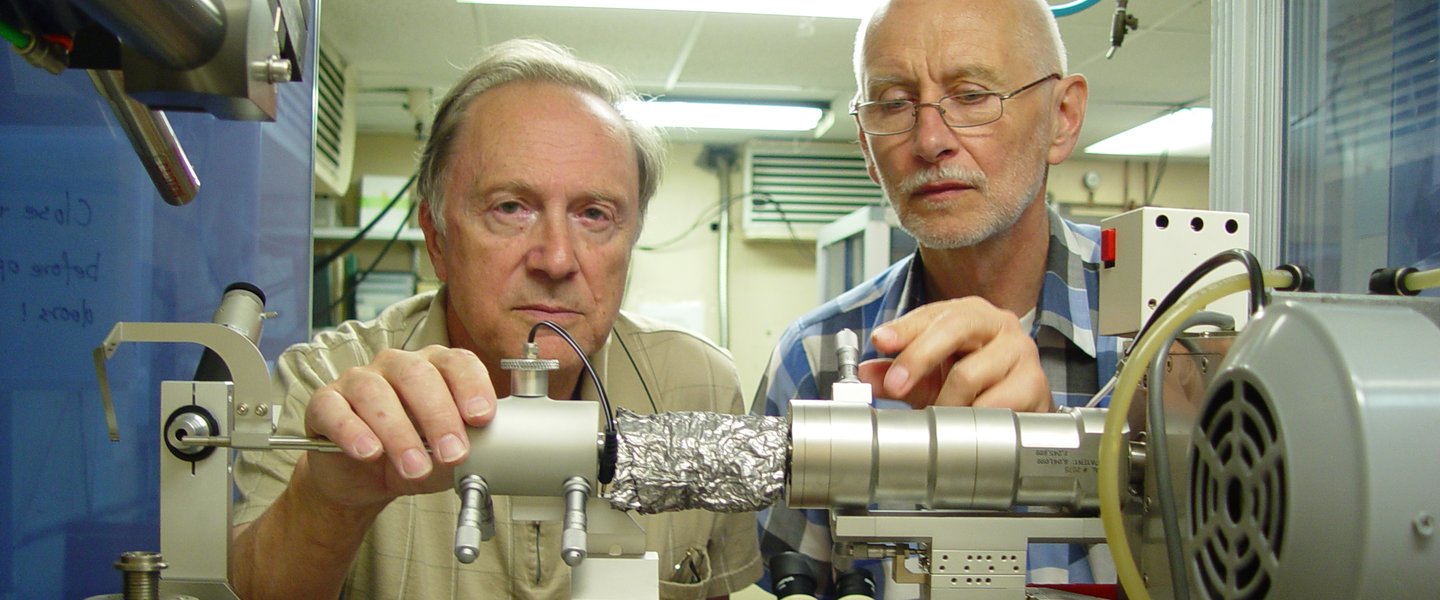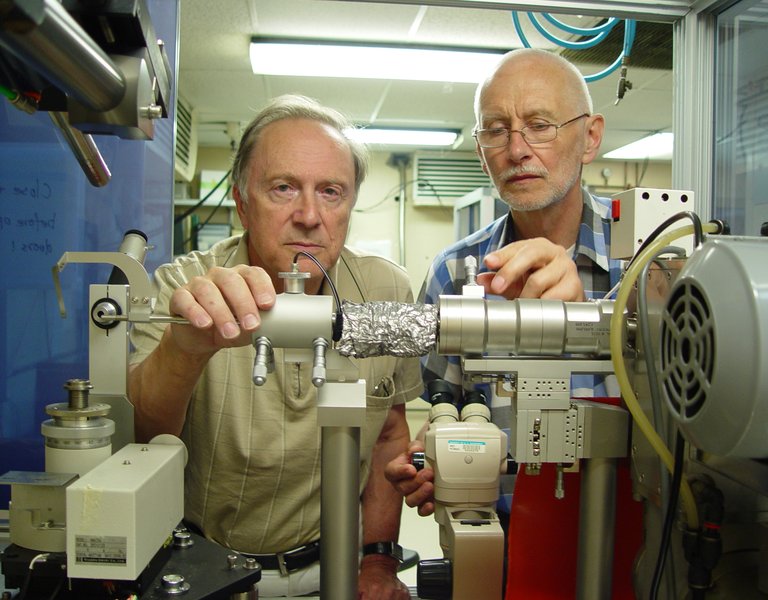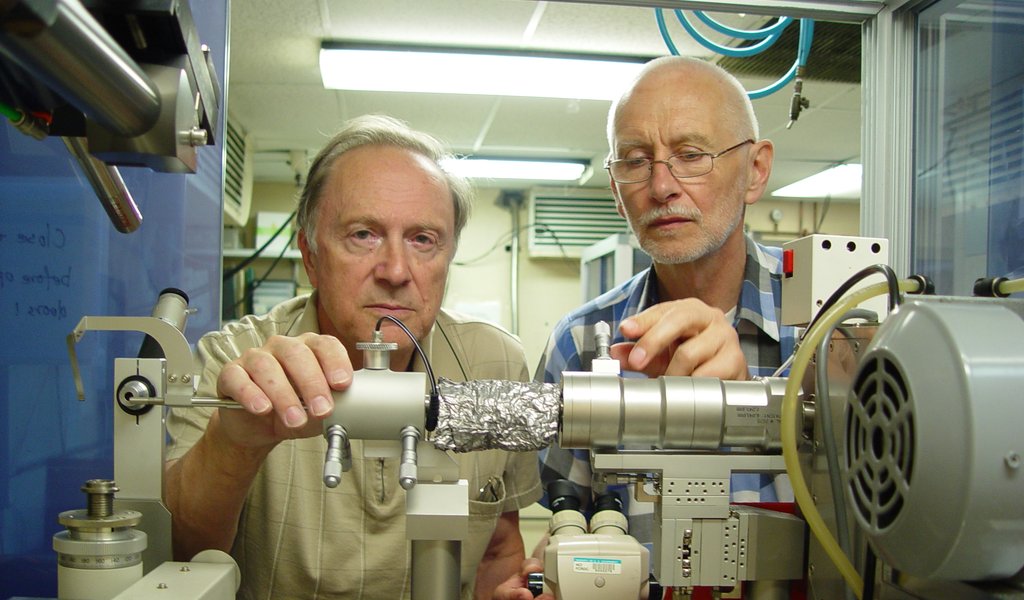Crystal experts
If it had not been for their discoveries in the field of crystallography, new treatments for illnesses such as AIDS would not exist nowadays. Professor Mariusz Jaskólski from the Adam Mickiewicz University in Poznan and Doctor Alexander Wlodawer from the National Cancer Institute in the US are the first winners of the Poland – U.S. Science Award, which they will officially receive in Washington on 28 April. “Poles have mastered the art of crystallography and are now among the world leaders in that field,” say the two scientists in an interview with the Polska.pl portal.
Magdalena Majewska, Polska.pl: Alexander Wlodawer is called the godfather of the Polish mafia of crystallographers. Why do Polish people specialize in this field of study to such an extent?
Dr Alexander Wlodawer: The “Polish mafia” was a humorous term coined by Ada Yonath, a Nobel laureate for her work on the structure of ribosomes, i.e. complex biological “machines” made up of nucleic acids and over seventy types of proteins. The researcher worked with Polish crystallographers in different locations across the world and she finally reckoned it had to be some Polish mafia. Indeed, many people of Polish descent living outside the country are involved in this field of study. I have been called the godfather simply because I am the oldest among them and may well have been working longest in the field.
Prof. Mariusz Jaskólski: Although scattered throughout the world, the Polish crystallographic community sticks together, which is extraordinary taking into consideration some of our national traits. They are successful because there has long been a very good crystallography school in Poland and a history of solid education in that field. Second, crystallography combines multiple natural sciences, from physics to biology and medicine, with a large dose of maths, and we are generally good at these fields. Third, biocrystallography is one of the most spectacularly developing branches of science. So, if a bright person goes abroad and looks for something fascinating in terms of science, he or she is likely to end up in a crystallographic laboratory.
What does a crystallographer’s work consist in?
Dr Alexander Wlodawer: For the time being, it is mostly a biologist’s work. Crystallographers have to know how to isolate proteins or nucleic acids. Once they obtain these pure biomolecules, they have to turn them into nice crystals, i.e. objects with three-dimensional protein structure repeats. It is still more art than science as guaranteed methods of obtaining crystals have not been invented yet. When complete, the crystals should be X-ray analysed. Finally, crystallographers should know what to do with all of that and how to draw the right conclusions. This is a rather hard field of research. We analyse how these bigger and bigger complex biological “machines” such as ribosomes work; it took Ada Yonath 25 years to work that out.
Poland – U.S. Science Award is granted biennially by the Foundation for Polish Science and the American Association for the Advancement of Science, the largest scientific association in the world.
“The idea behind the award is to emphasize the significance of Polish-American scientific cooperation and to show that it yields outstanding research achievements. We also hope that our laureates’ successes will inspire other researchers to establish such cooperation as well,” Professor Maciej Żylicz, the president of the Foundation for Polish Science, told Polska.pl.
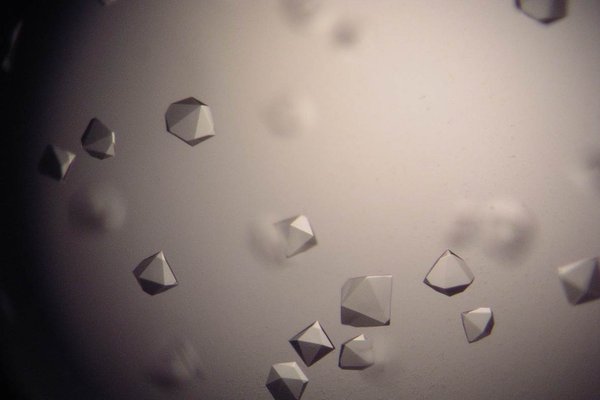 Why did you decide to become crystallographers?
Why did you decide to become crystallographers?
Dr Alexander Wlodawer:
I decided to become a scientist when I was 4 years old because my mother worked as a scientist in the Nencki Institute and I was sort of an institute’s child. When I visited the USA for the first time as a sixteen-year-old, I decided to become a scientist in America. I attended a Red Cross youth convention. We were hosted by President Kennedy in the White House. I thought the States would be a great place to take up my PhD studies, once I graduated from the university in Warsaw. This meeting really worked out. The choice of people was not random, either. Half of us got their PhDs in various fields. Ban Ki Moon, the current secretary general of the United Nations, attended that meeting as well. He then decided to become a diplomat and has made the greatest career of us all.
I got accepted to a PhD programme in Los Angeles. Just when I started, a new professor came to the university. He was a very young, active and excellent lecturer and actually it was him that encouraged me to take up crystallography. By the way, Professor David Eisenberg, who also has some Polish roots, is still one of the world’s most outstanding scientists in this field. I thus had a chance to learn from the best.
Prof. Mariusz Jaskólski: Crystallography was the most interesting course I had when I studied chemistry in Poland. It was taught by Associate Professor Zofia Kosturkiewicz. I realized that all our knowledge of the spatial structure of chemical molecules is based on crystallography, which was a revelation to me and changed my perception of chemistry. Moreover, in the crystallography lab we would conduct very interesting experiments combining chemistry (crystallisation) with physics (X-ray diffraction), mathematics (theory and calculations) and digital machine programming, which was a real treat for a student with a general thirst for knowledge in the 1970s. During my studies, I started to work with Professor Maciej Wiewiórowski, an excellent chemist who taught me to understand crystal and chemical molecule structures. Still, it was all a crystallography of small chemical particles.
How did you two meet?
Prof. Mariusz Jaskólski: It was in autumn 1988, thanks to Doctor Wlodawer. I let myself be persuaded to go on a first longer study visit abroad. Although I was going to a protein laboratory, I strongly believed I was a missionary of small particles. I suddenly saw a whole new world in the Crystallography Laboratory at the National Cancer Institute established by Doctor Wlodawer. It was the world of macromolecules made of not a few but thousands of atoms, with structures that had to be analysed not only to satisfy academic curiosity, but to speed up the research on certain urgent problems on the borderland of biology and medicine. No doubt it was Alex Wlodawer who helped me become a macromolecular crystallographer.
Dr Alexander Wlodawer: Mariusz Jaskólski came at the time when our research on the protein structure of the HIV virus had come to a standstill. His knowledge of pure crystallography turned out to be extremely useful. I was not as experienced in crystallography as he. He, on the other hand, did not have much experience in proteins, which was a subject I knew more about. Complementary skills added up to very much. He contributed to the accurate completion of the project and to the publication of its results in Science and Nature, the best scientific journals. It all happened in 1989, a year that was important to both Poland and us.
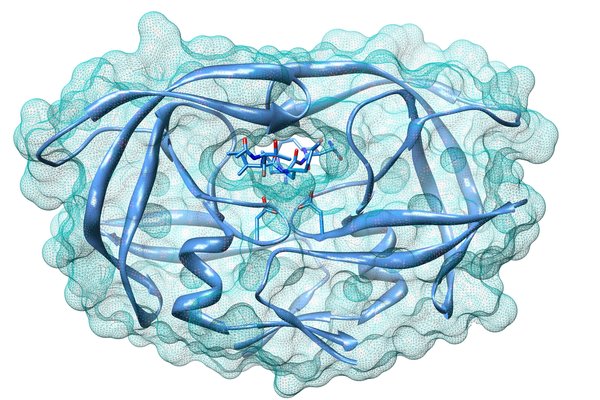 What was so groundbreaking about the discovery of the HIV virus protein structure?
What was so groundbreaking about the discovery of the HIV virus protein structure?
Prof. Mariusz Jaskólski: We should remember that in the late 1980s the whole world lived in fear of an AIDS pandemic. Medicine was helpless back at that time. Crystallographic research was the only flicker of hope. We had to learn about the molecular arsenal of the HIV retrovirus and design precision drugs that would attack the target. It was a great challenge although, to be honest, we focused mostly on scientific obstacles at first. Interestingly, in Doctor Wlodawer’s team, which also included Doctor Maria Miller and Doctor Mohana Rao, we used the protein of RSV, a slightly different virus attacking poultry. It was a very good move by Doctor Wlodawer, for it meant we did not have to obtain authentic biological material from HIV culture. The protein of the RSV virus turned out to be a very good model of the HIV protein, whose structure we managed to describe six months later anyway. Scientific openness, Alexander Wlodawer’s motto, was essential in this race of science against disease. We would constantly update drug design specialists on our research results. Thanks to that, just seven years after our discovery, doctors had at their disposal first drugs—HIV protease inhibitors.
Dr Alexander Wlodawer: Protease of HIV protein can be compared to scissors that cut proteins produced by the HIV virus into pieces and thus enable the virus to multiply in the human body. The medicine holds back this process—while proteins can still be produced, they cannot be cut into right pieces. Thus new viruses cannot be created and the whole virus infection is stopped. After discovering the protease structure of the HIV virus, we immediately published our research results without trying to patent or hide anything. Every pharmaceutical company had free access to our results, and it is worth mentioning that at that time all major companies tried to figure out what chemical compounds could stop this protein.
Prof. Mariusz Jaskólski: Even today, 30 years on, this is a unique event. I think that openness, cooperation and mutual support are a key to genuine success in science and to satisfaction from your achievements. As time goes by, this satisfaction becomes more and more important to me. It all comes down to one sentence—people who would have been condemned to die, are still alive!
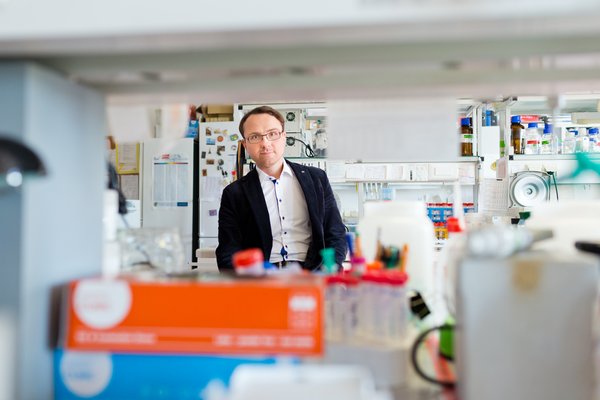
The “Multipole” crystallographers’ meeting
A four-day meeting of crystallographers of Polish descent will start in Warsaw on 10 May, 2015. This initiative is to encourage young Polish scientists to turn to structural biology. “Janusz Bujnicki, one of the youngest professors in Poland today, was the lead organizer of the first conference that took place four years ago,” says Doctor Alexander Wlodawer. “Marcin Nowotny, Doctor Bujnicki’s friend who works at the same International Institute of Molecular and Cell Biology in Warsaw, is right now one of the best young scientists in the country. He is doing research into proteins that interact with nucleic acids and repair genes, for our genes keep degenerating all the time,” adds Doctor Wlodawer.
What are you working on now?
Prof. Mariusz Jaskólski: I am still very interested in the structure of proteins that could be used to treat illnesses. A few years ago, we resolved the protein structure of a retrovirus attacking monkeys (we got that protein from our colleagues in Prague). We managed to resolve this structure with the help of internauts playing Foldit, a science computer game developed by Professor Baker’s team at Seattle University. We are also launching a huge international project aimed at saving our antibiotic arsenal that becomes increasingly useless in the light of the spreading resistance of pathogenic bacteria. We also analyse plant enzymes that can be employed in leukaemia treatment. Generally speaking, I am more and more fascinated by the structure of plant proteins. These are fantastic organisms with a great evolutionary success. We can learn a lot from them. I devote a lot of my time to crystallographic methodology. I work on this area not only with Doctor Wlodawer, but also with my other distinguished colleagues, Zbyszek Dauter and Władek Minor. They both work in the United States.
Dr Alexander Wlodawer: In my laboratory, we work on proteins with anticancer properties. Together with Mariusz Jaskólski, we look for methods to verify and possibly improve a huge number of protein structures we have gathered in the Protein Data Bank. Our theoretical work will be helpful for all those who intend to use structural information gathered by crystallography.
What does the Poland – U.S. Science Award mean to you?
Dr Alexander Wlodawer: We are glad our work has been appreciated. It is even more important to us than it would be as an individual achievement award. We have been working together for 30 years now. There are not too many rewards of this sort that recognise scientific collaboration.
Prof. Mariusz Jaskólski: If I were to mention the most significant aspect of this reward, I would just say the appreciation of our collaborative work. Of course I am happy that it is crystallography that has been recognised, even more so that examples of excellent Polish-American scientific cooperation exist in other fields as well.
Interview by MAGDALENA MAJEWSKA
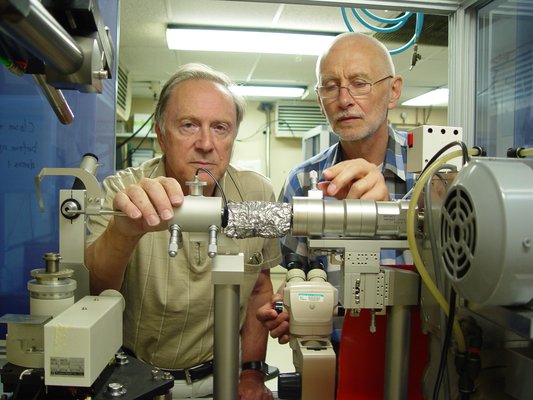
Professor Mariusz Jaskólski studied chemistry at the Adam Mickiewicz University. He is a corresponding member of the Polish Academy of Sciences, the European Molecular Biology Organization and Regia Societas Scientiarum Upsaliensis (Sweden). In 1994, he founded the Center for Biocrystallographic Research at the Institute of Bioorganic Chemistry of the Adam Mickiewicz University, which was the first protein crystallography laboratory in Poland, which he has headed ever since.
Doctor Alexander Wlodawer studied physics at the University of Warsaw. He got his PhD in the field of molecular biology in 1974 at the University of California, Los Angeles. Since 1987, he has been working at the National Cancer Institute as chief of the Macromolecular Crystallography Laboratory. He is also a foreign member of the Polish Academy of Sciences, the American Crystallographic Association, and the American Society for Biochemistry and Molecular Biology.
28.04.2015
